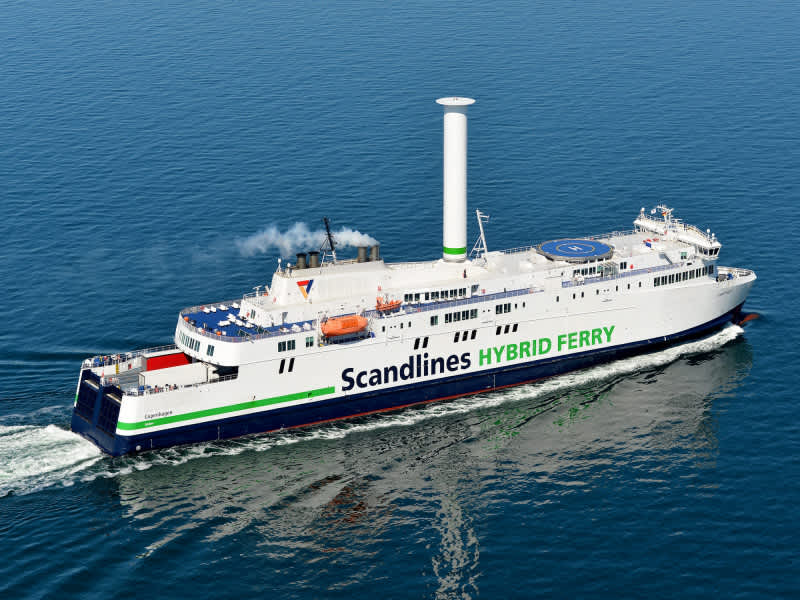Norsepower jointly organised a webinar with RINA on ‘Accelerating Sustainable Shipping with Rotor Sails’ to discuss the need to reduce emissions across the industry, and the role that wind propulsion technology can play in this transition. Joining Norsepower’s CEO, Tuomas Riski, were RINA Singapore’s Head of Decarbonisation, Energy Transition and Innovation, Jan-Paul De Wilde, RINA Italy’s Technical Director, Giuseppe Zagaria, and Scandlines’ Naval Architect, Rasmus Nielsen.
Opening the discussion, Zagaria highlighted how international organisations, such as the IMO and the EU, are actively pushing shipping to address the climate challenge. An example of this is the upcoming EEXI, EEDI and CII regulations that are designed to progress shipping’s decarbonisation. Norsepower’s Rotor Sails not only support compliance with these measures, but they have also been given Approval in Principle (AiP) by RINA, recognising its innovative and novel solution, as well as high safety standards. As Riski added, all of this can be achieved without compromising service speeds.
Commenting on the actual performance of vessels fitted with the Sails, Riski noted that the advantage of using Rotor Sails over a traditional square sail is that you can produce 10-times more thrust. Taking the example of Sea-Cargo’s Ro-Ro vessel, fitted with two 35m tiltable Rotor Sails, the equivalent square sail area of the ship adds up to 3000 m of traditional sail, making it one of the top 10 most powerful sail ships ever built, complementing its ability to achieve up to 25% average net-fuel and emissions savings, as also proven by several sea trials with Scandlines and NAPA, for example.
Illustrating some of these claims in practice, Nielson described how Scandlines has benefitted from installing Rotor Sails onboard its hybrid ferries, which operate on the Gedser-Rostock route. While most global routes are suited for Rotor Sails, this passage, in particular, has ideal conditions with the wind blowing perpendicular to the sail. This has helped reduce fuel consumption to make cost savings, driving efficiencies and ultimately, advancing Scandlines’ ambitions to be emission-free by 2040. Early planning of Rotor Sail installation and accurate information on wind speed and direction have been pivotal to Scandlines’ ability to optimise operations and see results.
As shipping navigates this industry-changing transition, it is even more important to share and demonstrate concrete examples of clean technology solutions that are proven and readily available. Key stakeholders in shipping, from operators, managers, class societies and shipyards to financiers, all have an important role to play in ensuring that these solutions are not only easily accessible, but also that shipping companies feel confident adopting them.


